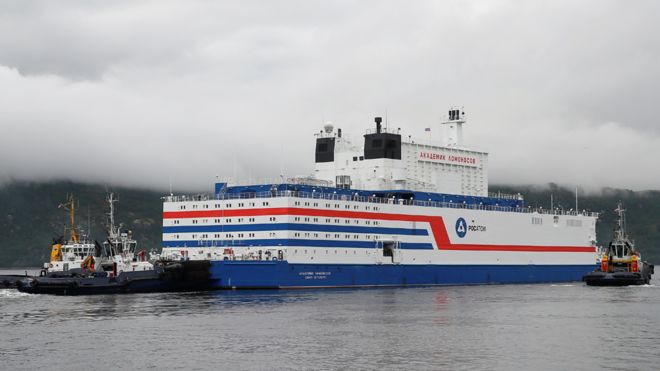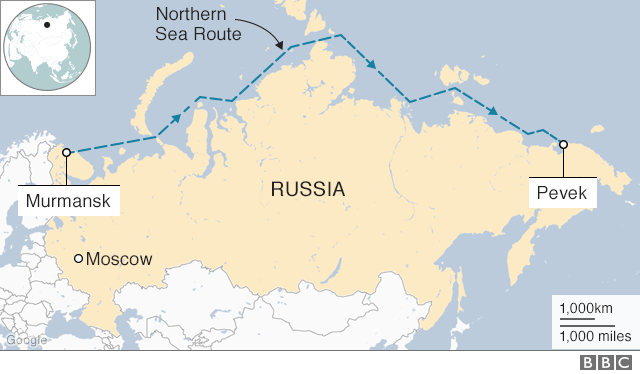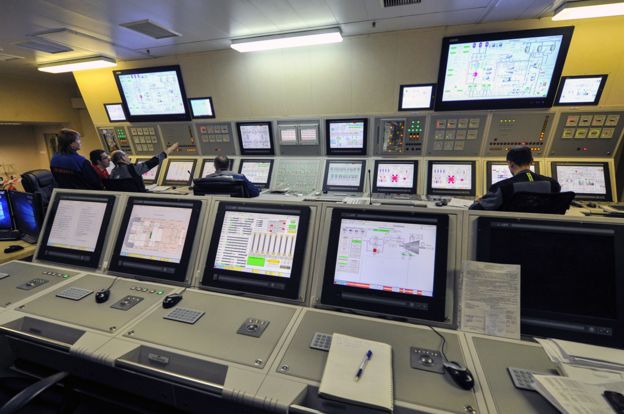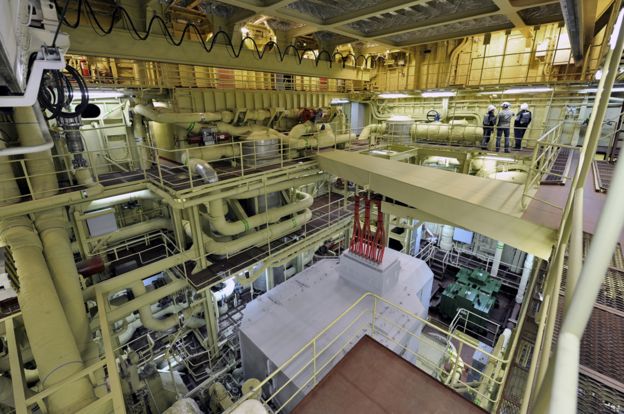Russia Floating Nuclear Power Station Sets Sail Across Arctic

Russia has
launched a pioneering floating nuclear power station, which will sail 5,000km
(3,000 miles) from the Arctic port of Murmansk to Chukotka in the far east.
The nuclear
agency Rosenergoatom says the Akademik Lomonosov's mobility will boost the power
supply to remote areas.
One of its
targets is to power the Chaun-Bilibin mining complex in Chukotka, which
includes gold mines.
Greenpeace
sees the project as high-risk, in a harsh weather environment.
Critics
including Greenpeace point to previous Russian and Soviet nuclear accidents and
warn that the Akademik Lomonosov's mission increases the risk of polluting the
Arctic - a remote, sparsely-populated region with no big clean-up facilities.
The launch
comes just two weeks after a nuclear-powered engine blew up on a
Russian naval test range in the Arctic, killing five nuclear engineers and
releasing radiation, though the 1986 Chernobyl disaster was far
worse.

The floating
power station's highly radioactive spent fuel will be stored on board. Others
of similar design will follow to serve remote areas.
The Akademik
Lomonosov is also destined to supply electricity to offshore oil rigs in
Russia's Arctic. Another idea is to hook it up to a desalination plant, to
produce fresh water, and in future island states could benefit from such power
stations.
The Northern
Sea Route connecting European Russia with far eastern ports is becoming
navigable for longer periods because global warming is reducing pack ice.
Three tugs
will tow the facility to Pevek, where it is expected to dock in late September.
In good weather conditions it will sail at 4-5 knots (7-9km/h).
The
Lomonosov was built in St Petersburg and has two nuclear reactors of the type
used in Russian icebreakers. They are KLT-40S reactors with a combined capacity
of 80 megawatts, and are reported to be tsunami-proof.
Russia's
Vesti news programme says the facility will have enough power to illuminate and
heat a town of about 100,000 inhabitants. The crew on board is expected to be
about 70-strong.
It is 140m
(459ft) long, 30m (98ft) wide and is expected to operate for 40 years.


In the
period 1968-1976 the US Army used a floating nuclear power plant at
the Panama Canal, for canal operations, called the MH-1A Sturgis. It was a
converted World War Two cargo ship, and was later decommissioned.
FROM .bbc.com/news/world-europe

No comments